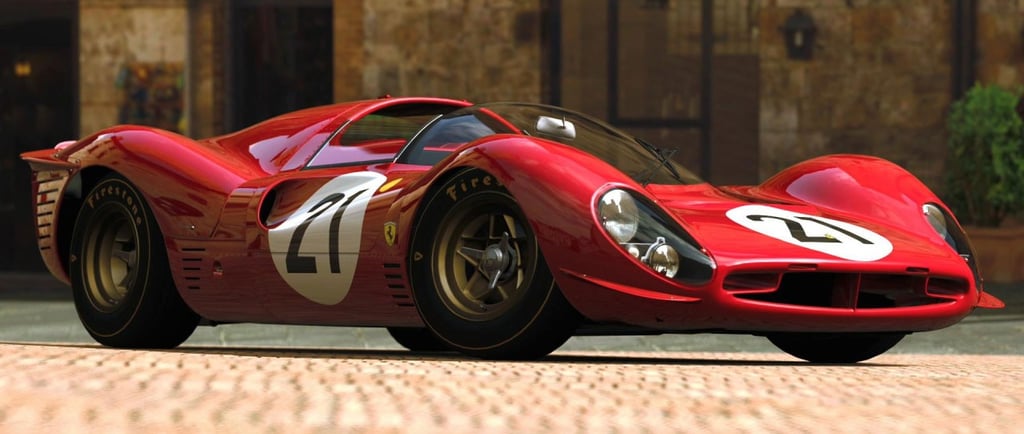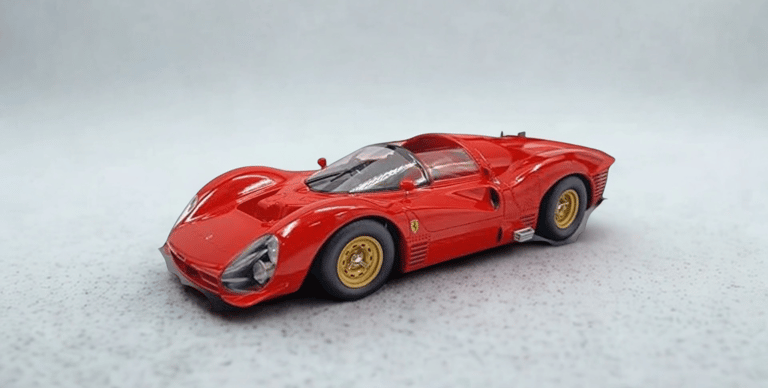Ferrari 330 P3 Miniature 1:18: The Legendary Prototype That Challenged Le Mans
The Ferrari 330 P3, introduced in 1966, is one of the most iconic racing cars in the Scuderia's history. Designed to compete against giants like the Ford GT40, the 330 P3 combined stunning automotive design, advanced engineering, and Ferrari's sporting DNA into a car that defined an era. With its aggressive lines, powerful V12 engine, and memorable victories, the model not only shone on the track but also cemented Ferrari's name in the world of sports prototypes. Today, the 330 P3 is one of the rarest and most sought-after cars in the world, a symbol of the golden age of motorsports.
RACE CARS
Driven Vault
8/26/20252 min read


History and Origin
In the mid-1960s, Ferrari and Ford engaged in one of the most intense rivalries in motorsports. While Ford launched the GT40, Ferrari responded with the 330 P family, which evolved into different versions.
In 1966, the Ferrari 330 P3, the successor to the 330 P2, was born. Designed by Mauro Forghieri and engineered by Carrozzeria Drogo, the P3 aimed to beat Ford at the 24 Hours of Le Mans and maintain Ferrari's supremacy in endurance racing.
Despite its difficulties against the powerful American team, the 330 P3 made history for its beauty, innovation, and strategic importance in Ferrari's development in prototypes.
Design and Style
The Ferrari 330 P3 is still considered one of the most beautiful racing cars ever made. With its low body, wide air intakes, and fluid silhouette, it resembled a sculpture in motion.
The P3's chassis was constructed of welded steel tubing reinforced with aluminum. The body, made of fiberglass and aluminum, helped reduce weight and improve aerodynamics.
The cockpit was narrow and functional, designed for long endurance races. Large side air intakes cooled the V12 engine, while the elongated rear end helped with stability at high speeds.
Cultural Impact and Exclusivity
Although it failed to defeat Ford at Le Mans 1966 (where Ford achieved a historic 1-2-3 with the GT40), the Ferrari 330 P3 is remembered as one of the most beautiful and important cars of the decade.
Its rarity is another factor in its exclusivity: only three examples were built, and two of them were later converted into even more competitive 330 P4 versions.
Fun Facts
The Ferrari 330 P3 was one of the brand's first cars to use mechanical fuel injection instead of carburetors.
Only one original P3 survives in pristine condition, making it even more valuable.
The car competed in the 1966 24 Hours of Le Mans but was defeated by Ford—this rivalry was portrayed in the film "Ford v Ferrari" (2019).


Engineering and Mechanics
The star of the Ferrari 330 P3 was its engine: a 4.0-liter V12, which delivered raw power with an unmistakable roar. The Lucas fuel injection system (instead of the previously used Weber carburetors) was a significant innovation, although it also brought technical challenges.
Another highlight was the 5-speed gearbox, developed by ZF, and the independent suspension on all wheels, ensuring greater precision in corners.
Technical Specifications
Engine: 4.0-liter naturally aspirated V12
Power: approximately 420 hp at 8,000 rpm
Weight: approximately 850 kg
Top speed: ~320 km/h
0–100 km/h: ~4.5 seconds
Transmission: 5-speed manual
Production: only 3 units manufactured
The Ferrari 330 P3 is a landmark in the history of motorsports. Even without achieving ultimate glory at Le Mans, it represented the essence of Ferrari: passion, speed, impeccable automotive design, and innovation.


Ferrari 330 P3
With only three units produced, it is one of the rarest and most sought-after Ferraris, a true collectible that symbolizes the golden age of prototype racing.
For those who love classic supercars, speed, and legendary machines, the 330 P3 is more than a car—it is a legend on wheels that will never be forgotten.
